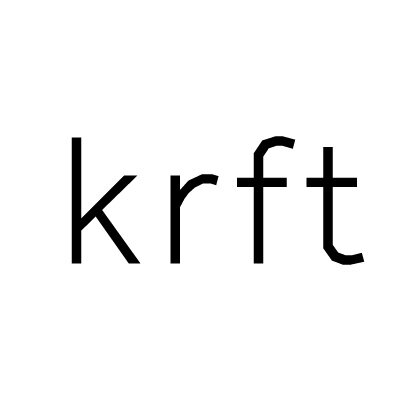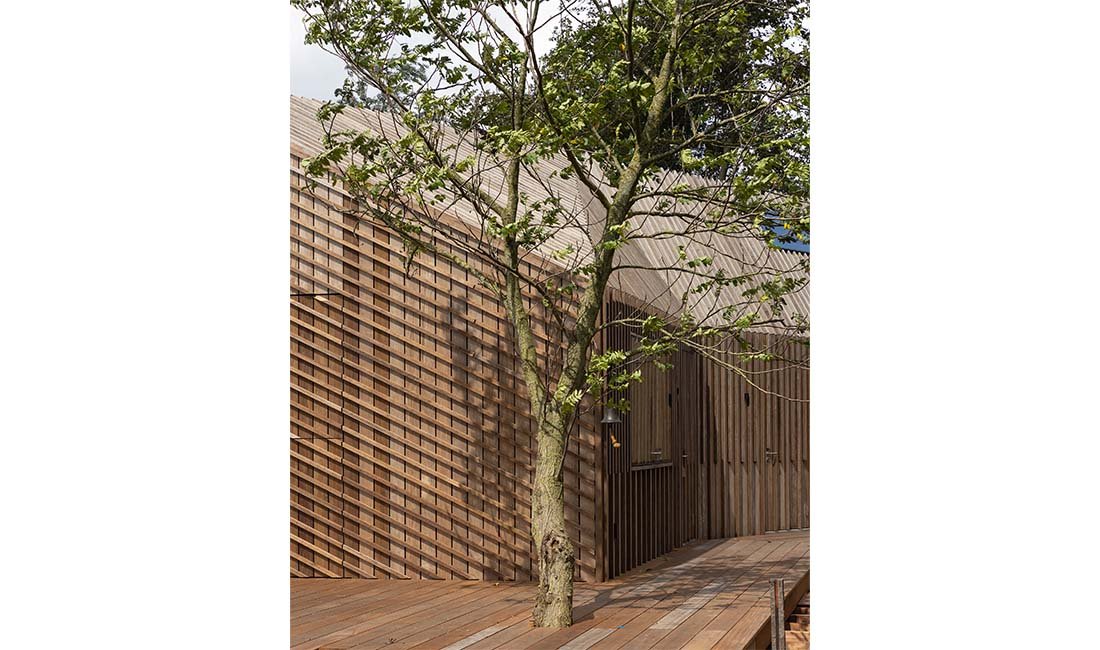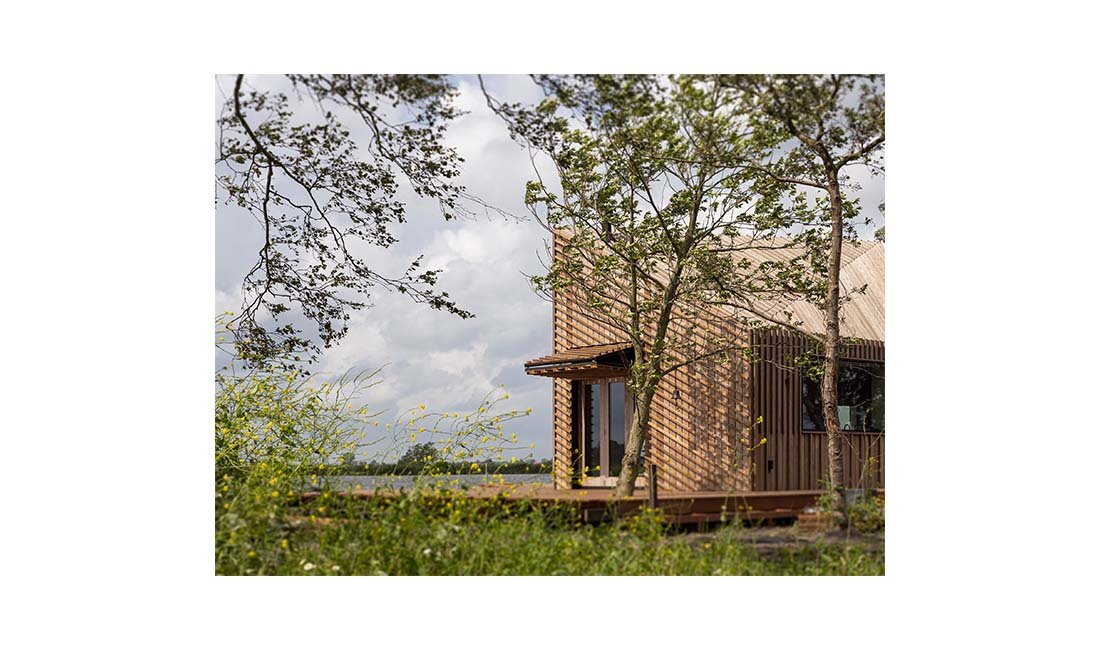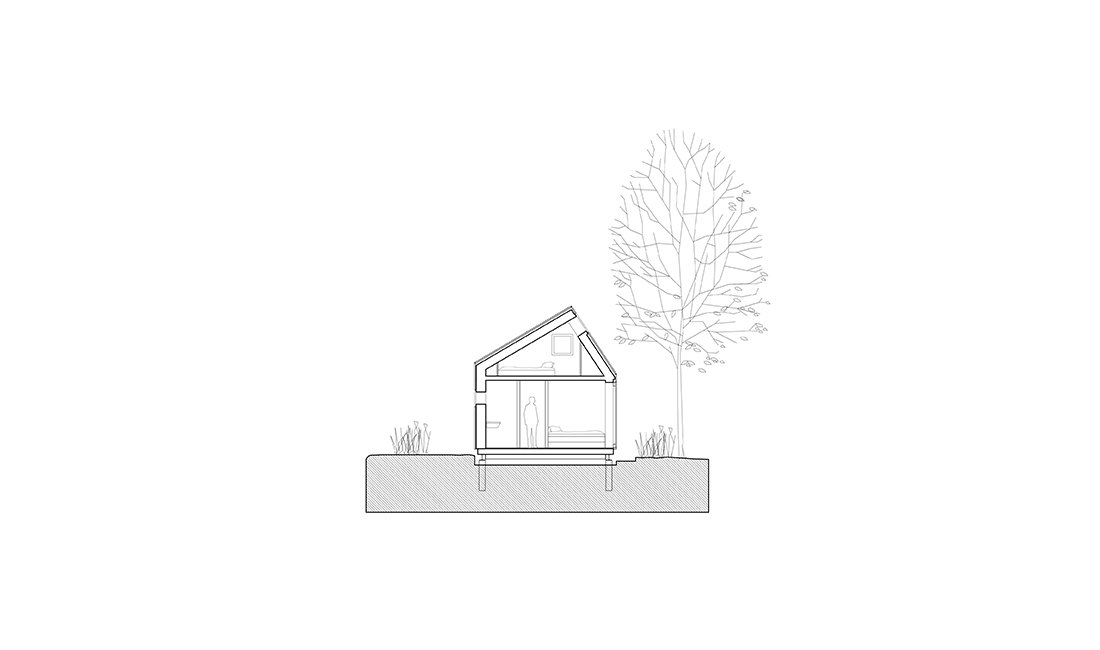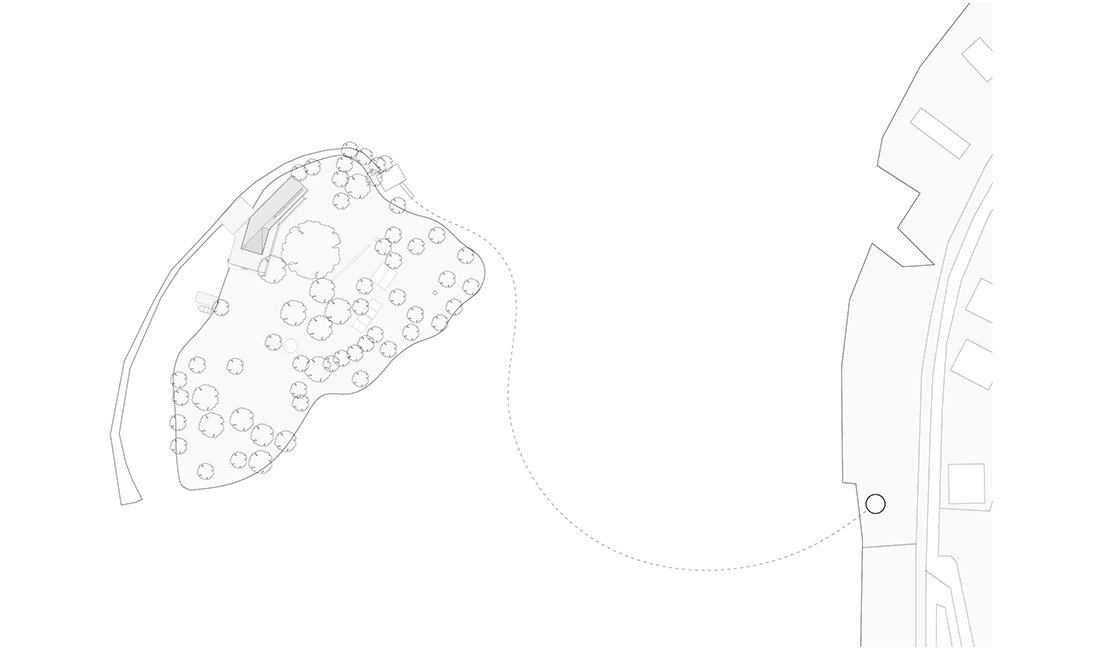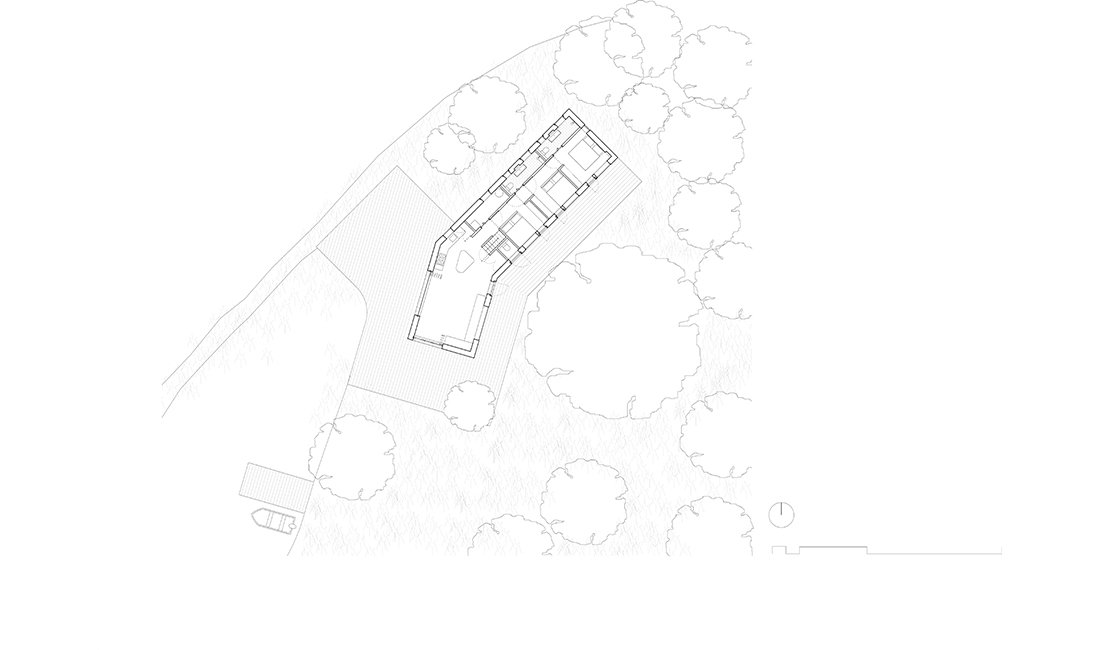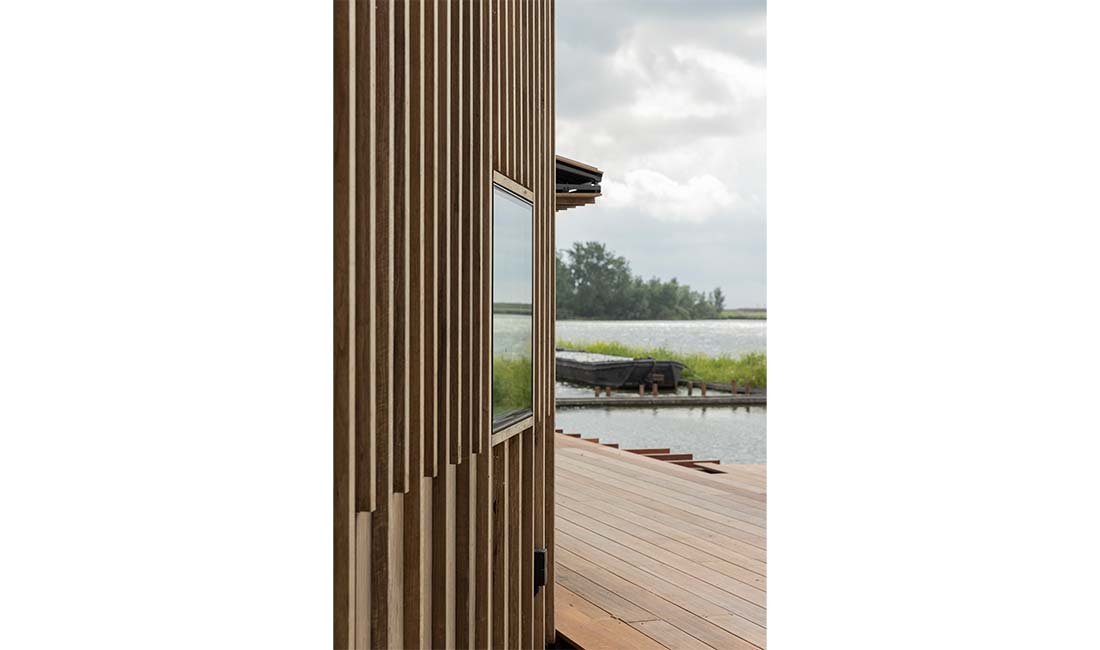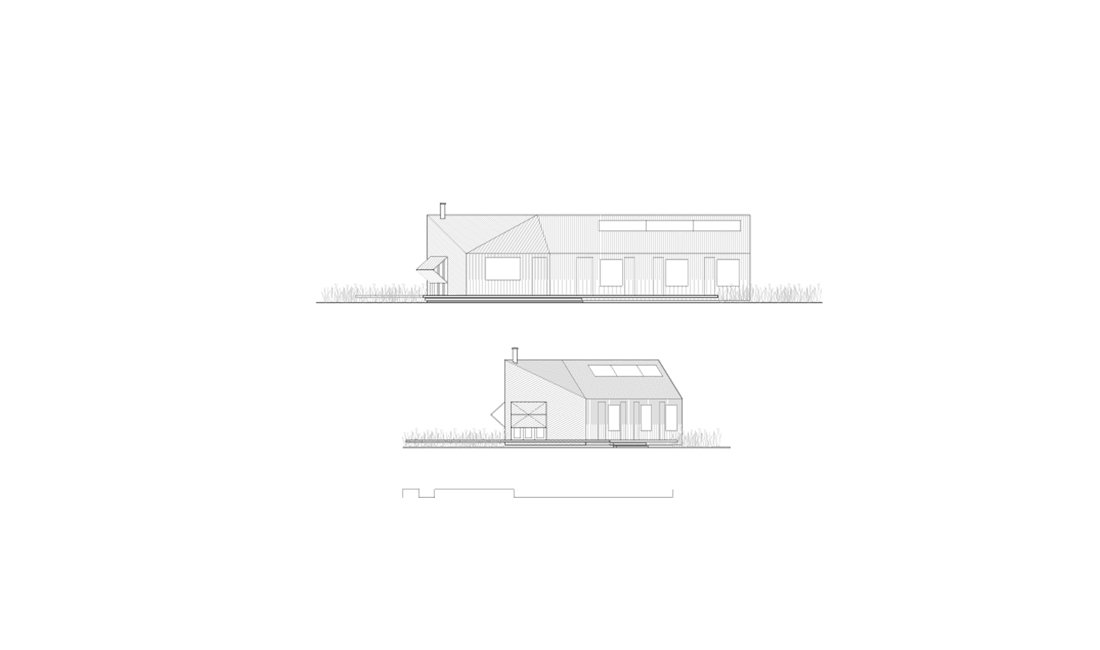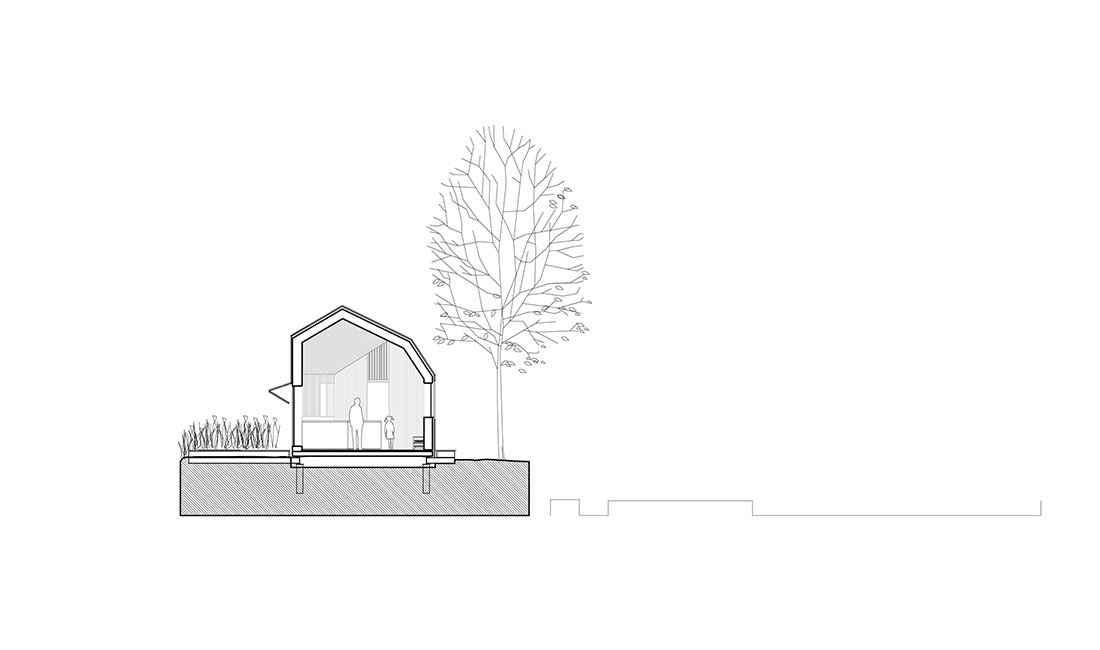The small island is located in Waterland in North Holland and is a paradise for birds and native plant species. On the edge of the island is a completely wooden summer residence, sensitively fitted into this context. The birds rule it, occasionally disturbed by human visitors, a family fleeing the city bustle.
The house is integrated on the edge of the island, next to the jetty to maintain the existing trees and plants. This also leaves the rest of the island alone for permanent birds. There is a unique view from the house and from the jetty at this location over the water and the reeds, towards the horizon and the skyline of Amsterdam.
The client and architect wanted to create a place of tranquility, in balance with the island and the elements. A house that has minimal impact on both the immediate place and greater context. The house had to be not only reversible and demountable, but also made of regenerative, biobased materials.
This fitted in seamlessly with the complex technical assignment: how to build on a small, swampy, hard-to-reach island. The island is located in a former – now closed off – estuary of the Zuiderzee and is normally only accessible by rowing boat over shallow water. A smart construction method was a prerequisite for building here: the house is composed of prefabricated, lightweight building elements, which were transported with falcon bottom pontoons.
The house is completely made of biobased materials: vapor-permeable HSB elements, with wood fiber insulation, finished with sustainably modified hardwood. The interior consists of CLT floors and a fixed interior of Finnish spruce underlayment, supplemented with recycled elements.
In order to protect the house in its winter sleep against the sometimes violent conditions on the island, the large facade openings are protected with facade shutters. This makes the house a completely closed wooden object, maximum approachable for the birds and other animals that claim the island. In summer, the folded up shutters provide shade and ensure a pleasant indoor climate.
The house on Makom is in symbiosis with the island and celebrates its Waterland context: the water, the birds and the horizon.
